Table of Contents
ToggleIn the world of manufacturing, CNC programming software is like the secret sauce that turns raw materials into masterpieces. Imagine a magic wand that transforms your ideas into reality, all while making your machines dance to your tune. Whether you’re a seasoned pro or just dipping your toes into the CNC waters, finding the right software can feel like searching for a needle in a haystack—except this needle can save you time, money, and a whole lot of headaches.
But fear not! CNC programming software isn’t just for tech wizards. With user-friendly interfaces and powerful features, it’s designed for anyone who wants to unleash their creativity and precision. Dive in, and discover how this software can revolutionize your workflow, boost your productivity, and maybe even make you the office hero—because who doesn’t want to be the one with the coolest toys?
Overview of CNC Programming Software
CNC programming software plays a crucial role in the manufacturing landscape. It allows operators to create, edit, and optimize code that directs CNC machines on various tasks. Numerous software options exist, each offering unique features tailored to different user needs.
Some popular CNC programming software includes Mastercam, SolidWorks, and Fusion 360. Mastercam offers extensive machining capabilities, while SolidWorks excels in CAD design. Fusion 360 combines CAD, CAM, and CAE into one platform, providing versatility for all project stages.
User-friendly interfaces characterize many CNC programming software solutions. Such designs enable individuals with varying skill levels to navigate programs easily. Options typically include tutorials or pre-set templates, helping users get started promptly.
Powerful features enhance productivity and precision. Advanced options, like simulation tools, allow users to visualize machine movements, minimizing errors before actual machining. Integrations with other software can streamline processes, enhancing overall workflow efficiency.
Cost varies based on software complexity and licensing models. Some solutions offer subscription-based pricing, while others use a one-time purchase model. Affordable options often exist for small businesses or hobbyists, ensuring that budget constraints don’t hinder access to quality tools.
Training resources are abundant, with online courses and forums available. These resources help users hone their skills, further increasing confidence and capability. By investing time in learning CNC programming software, individuals can maximize their productivity and unleash creative potential.
Key Features to Consider
Choosing the right CNC programming software involves evaluating several key features that impact functionality and user experience.
User Interface and Usability
A clean user interface enhances efficiency in CNC programming tasks. Intuitive layouts and easily navigable menus benefit both beginners and experts. Color coding and iconography can help users quickly identify tools. Additionally, customizable workspaces allow individuals to tailor the software to their preferences. Responsive design elements also improve the overall user experience. Practical training resources integrated into the software can further streamline the learning process. Software offering ample tutorials and support maintains user engagement and promotes skill development.
Compatibility with Hardware
Compatibility with various hardware is critical for seamless operation. Users must ensure that the software supports their specific CNC machines. Some software options seamlessly connect with popular CNC hardware brands, while others may require additional configuration. Confirming compatibility with different operating systems also matters. Many programs function across Windows and macOS, accommodating diverse user environments. Software supporting a range of file formats facilitates easier integration with other tools. Such versatility allows for efficient data transfer and reduces errors during the programming process.
Popular CNC Programming Software Options
Numerous CNC programming software options cater to various user needs. Each program provides distinct features that enhance productivity and creativity.
Software A: Features and Benefits
Mastercam stands out with its robust CAD/CAM integration. Users appreciate its extensive library of customizable toolpaths, which streamline the machining process. Simulation tools allow for real-time visualization, helping to minimize errors before execution. Beginners benefit from its user-friendly interface, while experienced operators leverage advanced functionalities. Training resources, including webinars and forums, are widely available, facilitating skill enhancement.
Software B: Features and Benefits
SolidWorks offers powerful modeling capabilities that cater to both design and manufacturing. Its parametric features allow users to modify designs quickly, promoting efficient design changes. Integration with other software solutions enhances collaboration, making it ideal for teams. The intuitive interface simplifies the learning curve for newcomers. Comprehensive support documentation and online tutorials are readily available, ensuring users can maximize their experience.
Software C: Features and Benefits
Fusion 360 combines CAD, CAM, and CAE tools into one platform, providing versatility. Its cloud-based features facilitate collaboration, allowing multiple users to work simultaneously. Advanced simulation capabilities help identify potential design flaws early. Users enjoy access to a vast library of customizable components, which accelerates the design process. Training videos and community support enhance learning and skill development for all user levels.
Advantages of Using CNC Programming Software
CNC programming software offers numerous advantages that significantly enhance manufacturing processes. Increased precision remains one of the top benefits, as software enables exact specifications essential for producing complex parts. Enhanced workflow is another critical advantage; streamlined processes reduce time spent on programming and setup.
Cost efficiency emerges prominently in discussions about CNC software. Users save on materials and labor through optimized machining strategies, ultimately driving profitability. Flexibility also stands out; software allows for quick adjustments to designs and programming, catering to evolving project requirements.
Training resources play a crucial role in maximizing software benefits. With ample tutorials and community support, users can become proficient in a shorter time. Supportive user communities foster collaboration and knowledge sharing, enhancing personal growth and skill development.
Additionally, simulation tools enhance visualization of machining operations. These tools minimize potential errors, providing users with a clearer understanding of outcomes before actual production. Enhanced creativity is another advantage, as CNC programming software allows designers to explore innovative ideas that might not be possible manually.
Furthermore, compatibility with various hardware remains vital for many users. Software that easily integrates with specific CNC machines ensures smooth operational flow, reducing the likelihood of disruptions. User-friendly interfaces contribute significantly to overall efficiency, making even complex tasks manageable.
Finally, options for both subscription-based and one-time purchase models address diverse financial needs. This variety ensures that small businesses and hobbyists find software that aligns with their budget. All these advantages make CNC programming software an invaluable tool in modern manufacturing.
Challenges and Limitations
CNC programming software poses several challenges and limitations that users often encounter. High costs represent a significant barrier for small businesses and hobbyists. Subscription models may not fit every budget, leading to hesitation in adopting advanced software solutions. Complexity in some software options can overwhelm beginners, hindering the learning curve and slowing productivity.
Compatibility issues frequently arise with different hardware and operating systems, causing integration headaches. Users sometimes find specific CNC machines are not supported, limiting software effectiveness. Limited customization options in certain programs restrict user flexibility, making it challenging to meet unique project requirements.
Training resources are abundant, but they vary in quality and depth. Users may struggle to find comprehensive guidance tailored to their software choice. Additionally, steep learning curves associated with powerful features can discourage newer users from fully engaging with the software’s capabilities.
Inconsistent performance across various setups can result in unpredictable outcomes. Users may face machine downtime due to software malfunctions or errors, impacting overall production schedules. Support response times from software companies can also vary significantly, further complicating problem resolution.
Despite these challenges, many users navigate through them to maximize efficiency and productivity. By staying informed about software updates and participating in community forums, users can mitigate some limitations. The key lies in choosing the right software that aligns with specific needs while remaining aware of potential obstacles that may arise.
CNC programming software is a game changer for the manufacturing sector. Its ability to streamline processes and enhance creativity empowers users to achieve remarkable results. With a variety of options available, including Mastercam, SolidWorks, and Fusion 360, individuals can find the right fit for their specific needs.
The importance of user-friendly interfaces and compatibility cannot be overstated. These factors play a crucial role in ensuring an efficient workflow. As technology continues to evolve, embracing CNC programming software will not only improve productivity but also drive innovation in manufacturing. By investing in the right tools and resources, users can unlock their full potential and navigate the complexities of modern machining with confidence.






